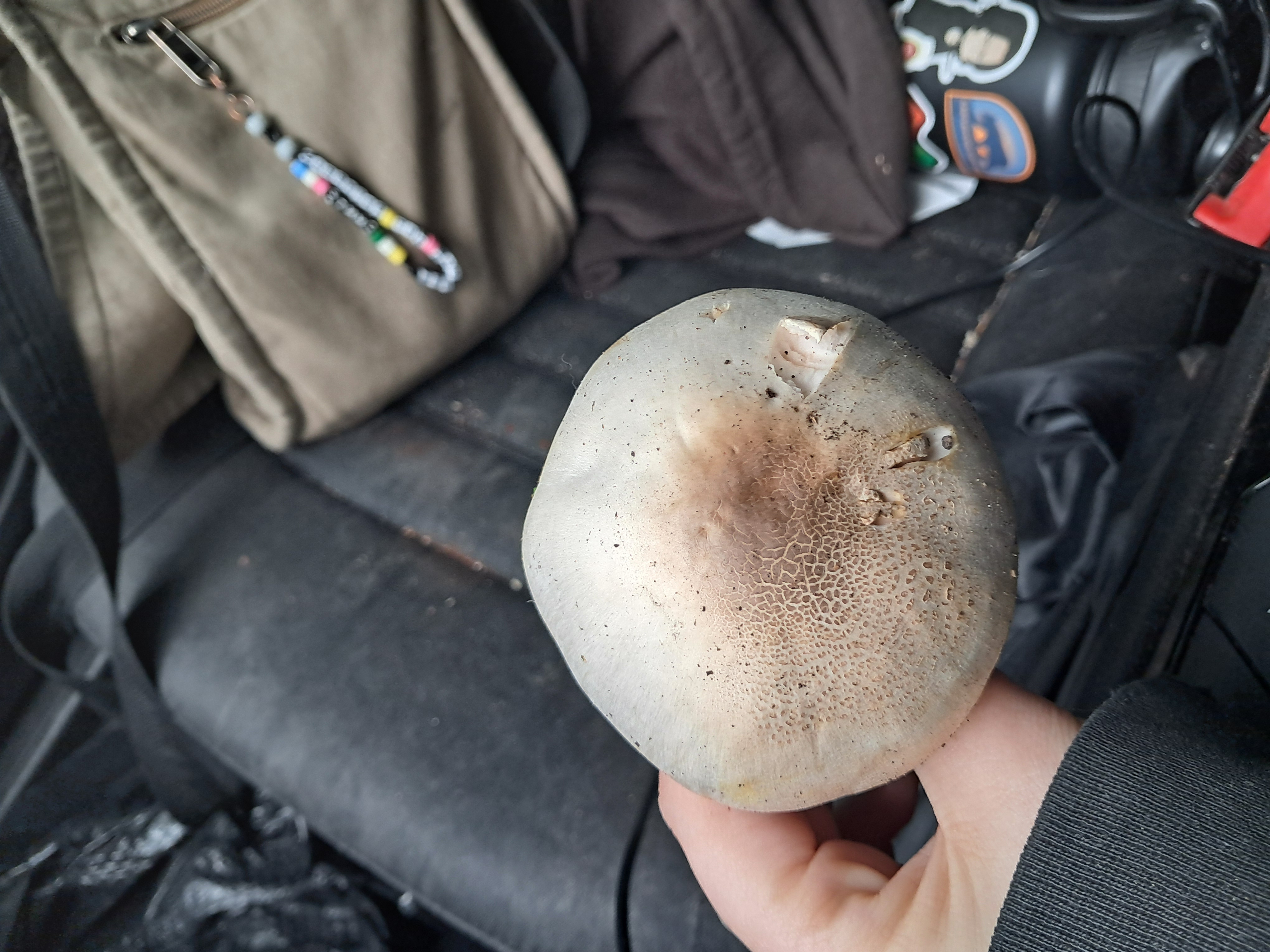Yellow Stainer
Agaricus xanthodermus
Potential Toxic Yellow Stainer (Agaricus species)

1 / 4
All Images (4)
Key Features
- Cap white
- broad
- with a flattened
- slightly scaly brown center.
- Gills free
- crowded
- currently pinkish-salmon color.
- Robust white stem with a prominent
- skirt-like ring (annulus).
- Grows terrestrially in soil or grass.
- Stem base often stains bright yellow when bruised (unconfirmed here).
Color:
White cap/stem; Pink gills.
Smell:
Unknown (Crucial distinguishing feature, often phenolic or inky for this species)
Growth Pattern:
Single
Environment:
Soil
Habitat & Distribution
Habitat:
Lawns, parks, disturbed ground, grassy areas.
Distribution:
Widely distributed across North America, including Colorado.
Seasonality:
Summer to Autumn
Critical Features for Confirmation
- Critical chemical tests (yellow staining) and odor assessment are missing.
- Identification relies solely on morphology, which is shared by several Agaricus species.
Economic Value
Market Demand:
None - toxic
Price Range:
N/A
Commercial Use:
None
Toxicity Information
Symptoms:
- Nausea
- Vomiting
- Severe diarrhea
- Abdominal cramps
Onset Time:
30 minutes to 3 hours
First Aid:
- Seek immediate medical attention.
- Preserve specimen for identification by medical staff.
Emergency Contacts:
- 911 (US)
- Poison Help (US): 1-800-222-1222
Similar Species
Meadow Mushroom
Agaricus campestris
Key Differences:
- Lacks phenolic odor.
- Stem base does not stain yellow.
- Gills turn dark brown faster.
Destroying Angel
Amanita virosa
Key Differences:
- Gills are always white.
- Has a distinct sac-like volva at the base.
- Lacks the pink gill stage.
Recommended Action
Do not consume. Isolate specimen immediately and wash hands thoroughly.